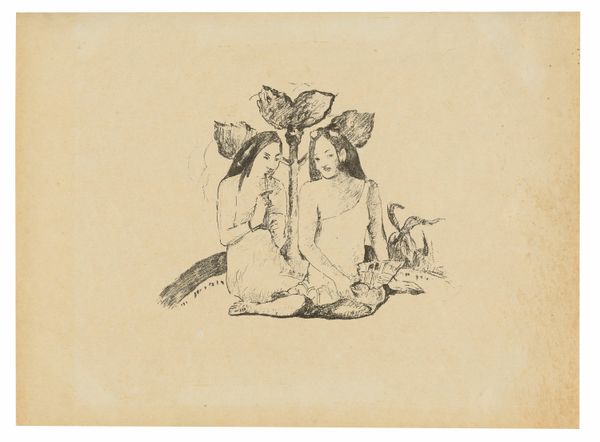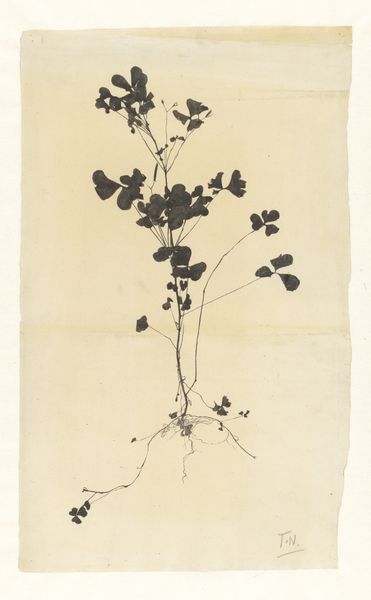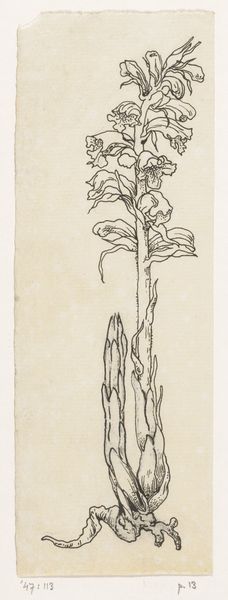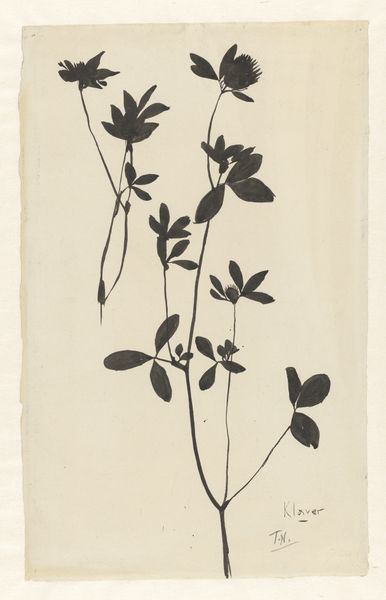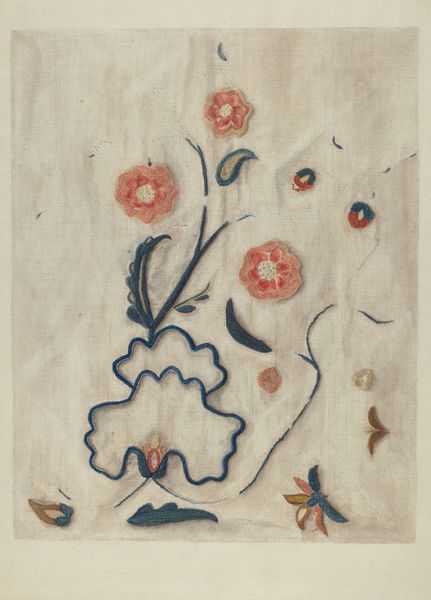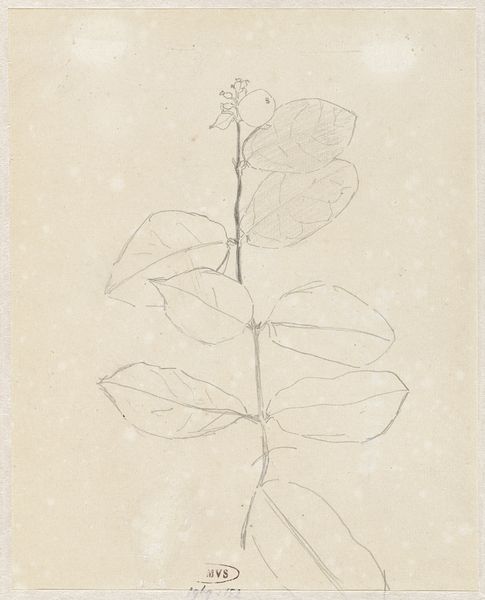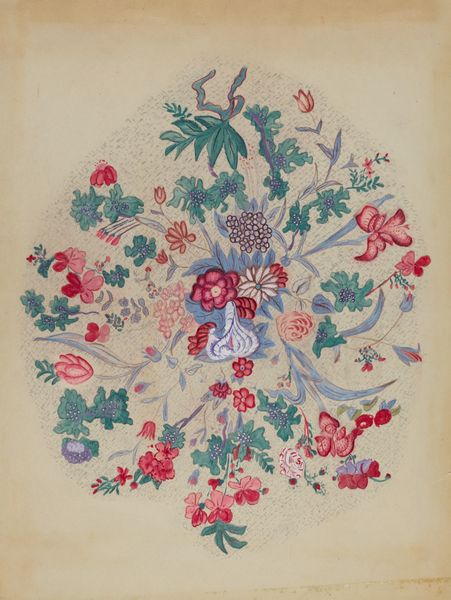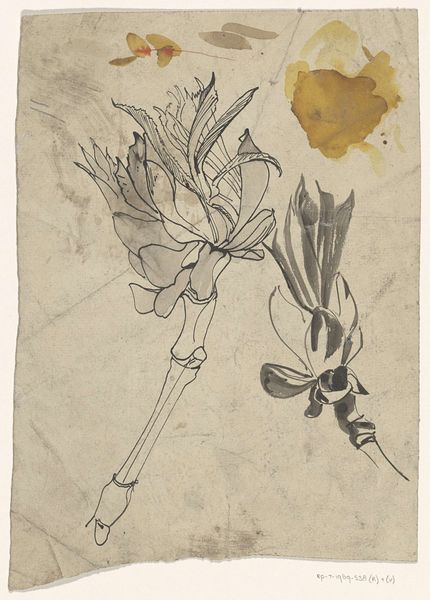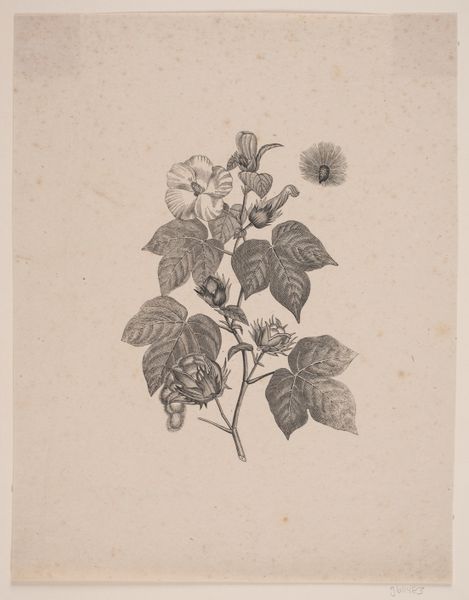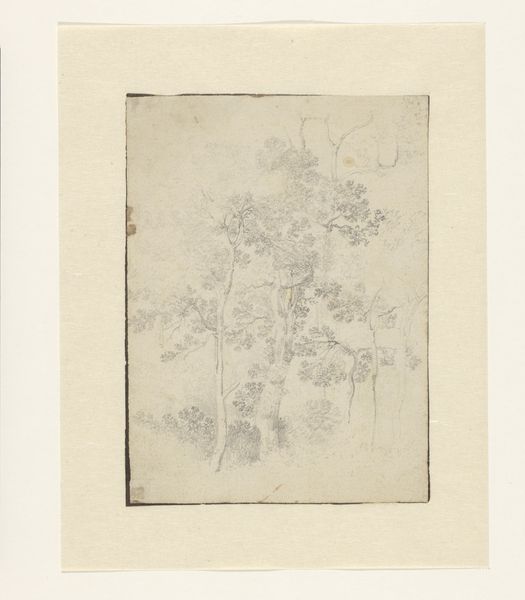
Dimensions: height 230 mm, width 168 mm
Copyright: Rijks Museum: Open Domain
Curator: So, what strikes you most about this piece? For me, it’s the intimate setting, almost like peeking into someone's personal space. Editor: Definitely. The fragility, for one. There's an immediate sense of quietude evoked by the watercolor. Tell me more about the artwork itself. Curator: Well, it is titled "Winde in een vaas van aardewerk" by Frans Everbag. Executed in watercolor on paper some time between 1887 and 1931, it depicts morning glories arranged in a vase set upon an aged book. Editor: A book as a pedestal! It challenges conventional expectations of support, elevating, if you will, domesticity. Is that a comment on women's work and intellectual life during the period, perhaps? Curator: It's very possible. The layering of morning glories speaks to notions of time, cycle, beauty that’s so inherently ephemeral, while simultaneously restrained by a clear cultural trope of placing cut flowers in vessels. Everbag subtly undermines established tradition through form and media. Editor: I like your suggestion. It brings me to think about access and who has it. What was the accessibility of visual art in Everbag’s lifetime? I wonder if they wanted to share an easily viewed sentiment in that day by utilizing common everyday objects in a home that others may be familiar with. Curator: That makes sense within the rise of Impressionism as a social project – to see the inherent interest and meaning in everyday life, made accessible for the working classes that began frequenting public art exhibitions. We have here visual tropes of a time. Editor: Ultimately, it is so accessible—a fragile expression, even if you don’t consider any art historical narrative. I find I enjoy how approachable and small-scale it is. It gives a viewer a different access point. Curator: Absolutely. We've uncovered a refreshing depth by exploring these floral-scape arrangements within an historic narrative that welcomes current sensibilities.
Comments
No comments
Be the first to comment and join the conversation on the ultimate creative platform.
